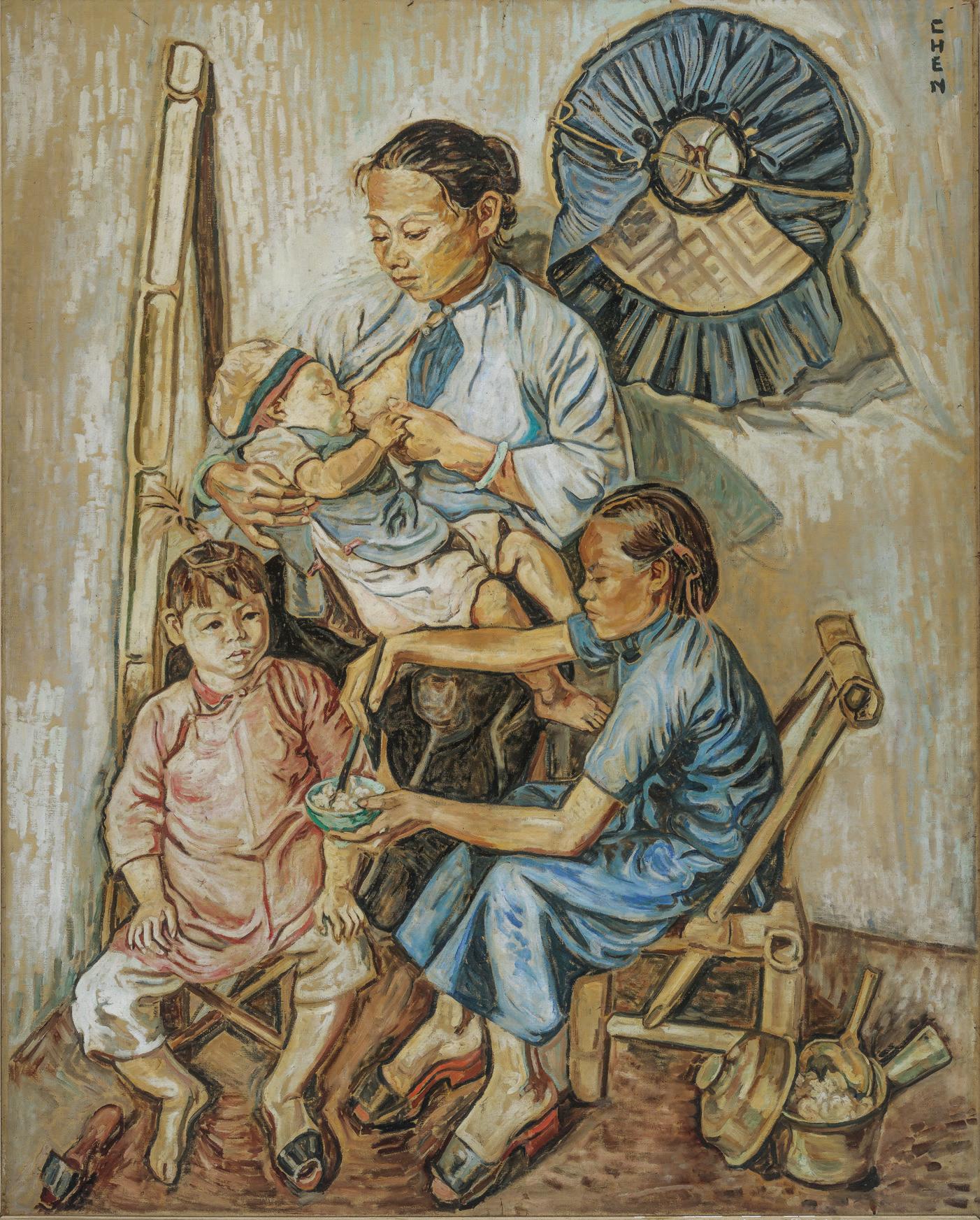
6 minute read
Long-Term Exhibitions
SIAPA NAMA KAMU? ART IN SINGAPORE SINCE THE 19TH CENTURY
Ongoing | City Hall Wing, Level 2, DBS Singapore Gallery
Advertisement
Georgette Chen (张荔英) Hakka Family 1939 Oil on canvas, 162 × 130 cm Anonymous Gift
Hakka Family is one of Georgette Chen’s most significant works due to its impressive scale and reflection of Chen’s artistic philosophy that the purpose of art is to elevate everyday subjects. Painted while Chen was in Hong Kong, she applied the techniques that she had honed as a student in Paris in the 1920s to depict the people in and context of her surroundings—something that she would continue to develop after her move to Malaya in 1951.
On display in DBS Singapore Gallery 1.
The DBS Singapore Gallery is made possible with the support of DBS Bank.
BETWEEN DECLARATIONS & DREAMS: ART OF SOUTHEAST ASIA SINCE THE 19TH CENTURY
Ongoing | Supreme Court Wing, Levels 3–5, UOB Southeast Asia Gallery
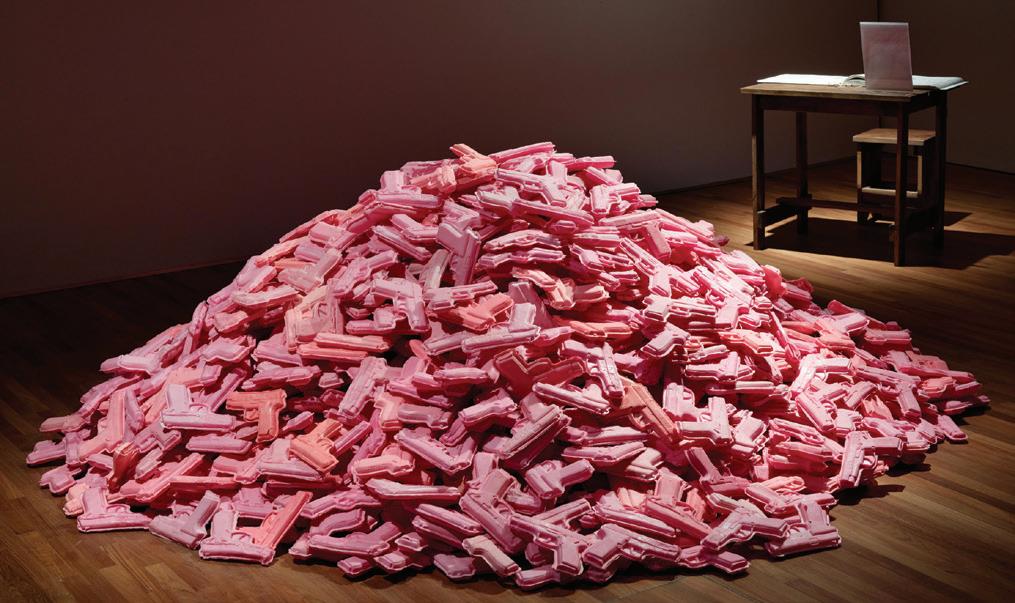
F.X. Harsono What Would You Do If These Crackers Were Real Pistols? 1977–2019 Crackers, table, chair, instructions and notebook, dimensions variable
F.X. Harsono was a key figure in Indonesia’s New Art Movement, a group that emerged in 1975 and sought change through new art forms and contemporary practices. He created this work in 1977 as a political statement against Indonesia’s then-President Suharto’s authoritarian New Order regime. Harsono provokes the viewer to consider the infiltration of violence into everyday life with a simple question: What would you do if these crackers were real pistols?
On display in UOB Southeast Asia Gallery 11.
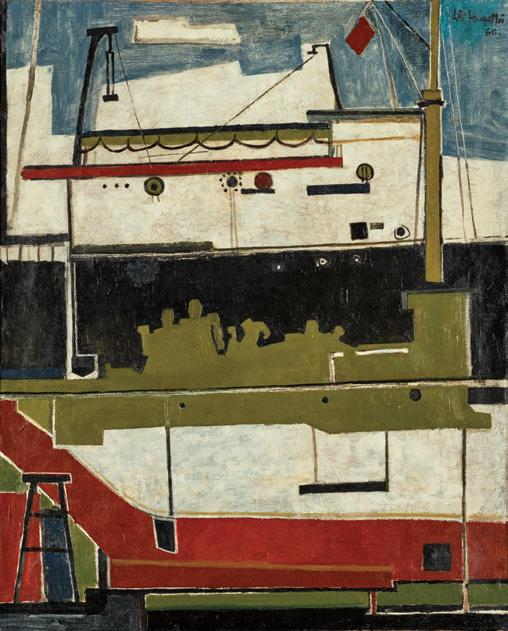
In this painting, a familiar urban scene appears streamlined and modern. The shapes of two ships and the silhouettes of workers are simplified such that the image appears to be almost abstract. It was painted by Lai Foong Moi, the first graduate from Singapore’s Nanyang Academy of Fine Arts (NAFA) to study in Paris, where she also exhibited in salon exhibitions.
On display in UOB Southeast Asia Gallery 7.
Lai Foong Moi Ship 1960 Oil on canvas, 81.5 × 65 cm
The UOB Southeast Asia Gallery is made possible with the support of UOB.
LONG-TERM EXHIBITIONS
FAMILIAR OTHERS: EMIRIA SUNASSA, EDUARDO MASFERRÉ AND YEH CHI WEI, 1940s–1970s
Ongoing | Dalam Southeast Asia, Level 3, UOB Southeast Asia Gallery
Who is “the Other”? What does it mean to represent peoples who are different from one’s own?
Familiar Others explores these issues through the works of three Southeast Asian modern artists. Emiria Sunassa (1894–1964) painted images of peoples from throughout the Indonesian archipelago but had a special interest in Papua. Eduardo Masferré (1909–1995) photographed the peoples of the Cordillera region of the Philippines, where he spent his life. Yeh Chi Wei (1913–1991) travelled throughout Southeast Asia but was especially inspired by the Indigenous peoples of Sarawak and Sabah.
To open up a discussion about the contemporary implications of these works, this exhibition includes commissioned responses from artists, writers, musicians and scholars who have community ties to the people represented in the artworks.
Dalam Southeast Asia is an experimental project space located within the UOB Southeast Asia Gallery. Projects presented here ask critical questions and explore lesser-known narratives in Southeast Asian art while rethinking what a collections-based display is and what it may seek to achieve.
Yeh Chi Wei. Drummer. c. 1965. Oil on canvas, 104.5 × 91.5 cm. © Yeh Toh Yen
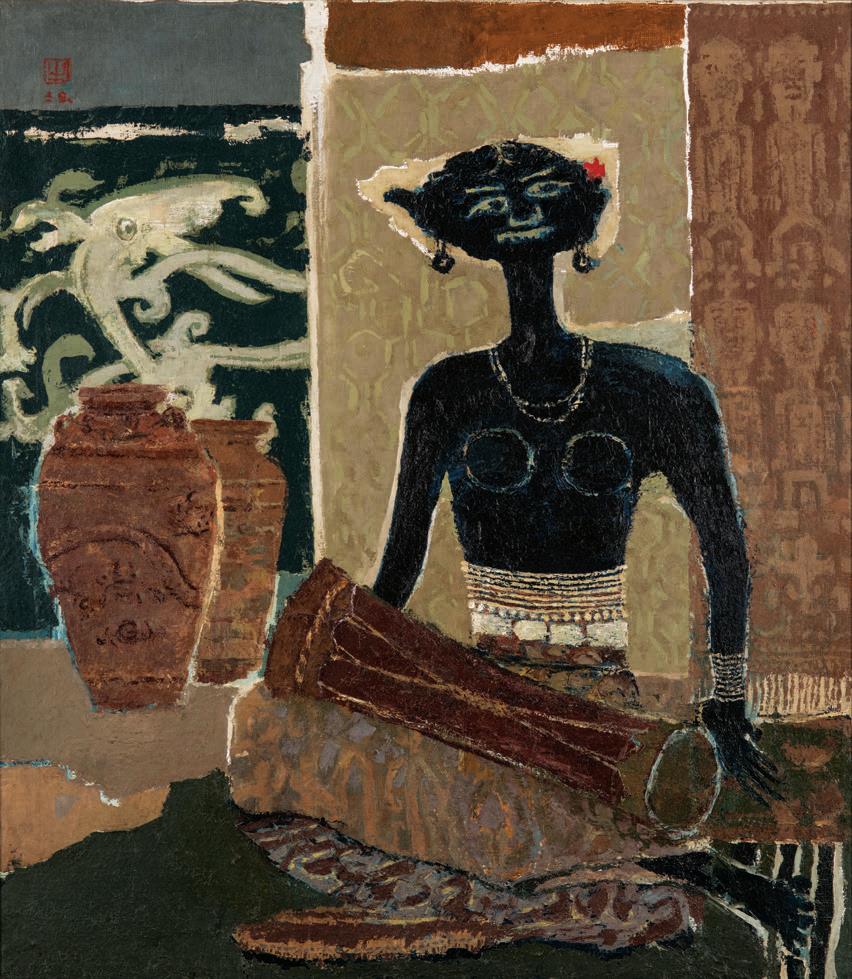
The UOB Southeast Asia Gallery is made possible with the support of UOB.
UNREALISED
Ongoing | Accessible only via the Gallery Explorer app
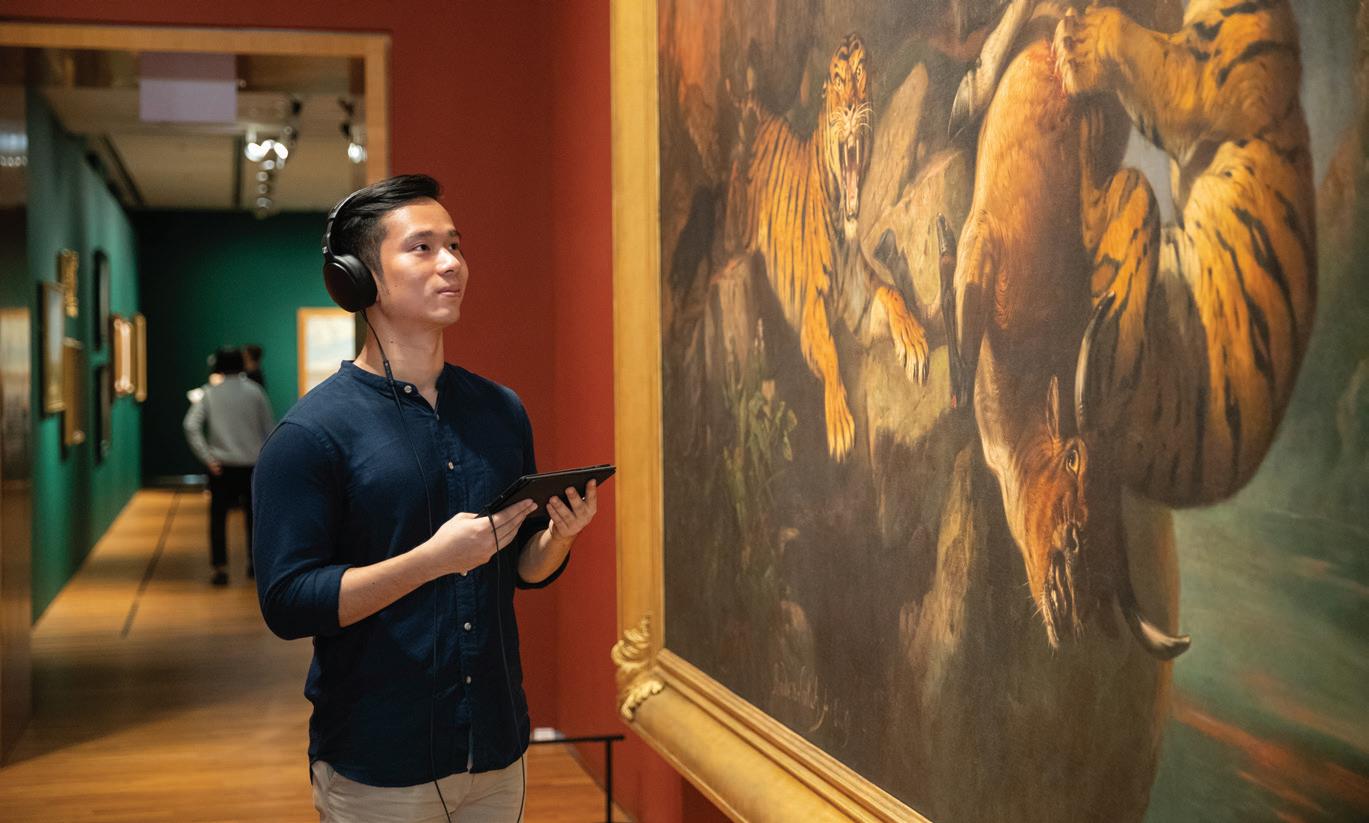
unrealised is a virtual experience developed in dialogue with three artists—Heman Chong, Ho Tzu Nyen and Erika Tan. It tests the potential of the digital image within the physical spaces of the Gallery’s long-term displays. To access unrealised, please download the Gallery Explorer app from the App Store and Google Play store.
For more information, please visit nationalgallery.sg/unrealised.
SCAN TO DOWNLOAD APP
Please note earphones are required to experience unrealised.
LONG-TERM EXHIBITIONS
OUTBOUND
Ongoing | Various locations nationalgallery.sg/outbound #outboundsg

Gary Carsley (b. 1957, Australia) with Jeremy Chu (b. 1973, Singapore) at their co-created installation The Regency Made Me Blind (2018), an OUTBOUND commission by National Gallery Singapore. Laser print on photocopier paper, latex print on self-adhesive vinyl, UV print on backlit film rendered as mechanised roller blinds, UV laminated C-print applied to IKEA Gilbert chair.
This stairway “garden” is made with digitally composited photographs of botanical gardens in Hanoi, Manila, Bogor, Kuala Lumpur and Singapore, all of which have colonial origins. Bands of colours mimicking Regency-era stripes were later superimposed on the images. These were then printed on roller blinds, self-adhesive vinyl and more than 5,000 sheets of coloured A4 photocopier paper, which the artists reverently applied to the walls. This meditative labour is inspired by the meticulous gold leafing of the interiors of sacred places and is also evoked by the Tibetan Buddhist mantras on the walls, which symbolically cleanse passing visitors of negative karma.
OUTBOUND is a series of unique commissions that imaginatively transforms transitional spaces at the Gallery. Each commission is an artistic and temporal landmark that anchors and guides the visitor’s experience while highlighting the Gallery’s iconic architecture. The inaugural season presents projects from artists Gary Carsley (Australia), Jeremy Chu (Singapore), Jane Lee (Singapore), Haegue Yang (South Korea) and Yee I-Lann (Malaysia).
LISTENING TO ARCHITECTURE: THE GALLERY’S HISTORIES AND TRANSFORMATIONS
Ongoing | City Hall Wing, Level 4, ArchiGallery
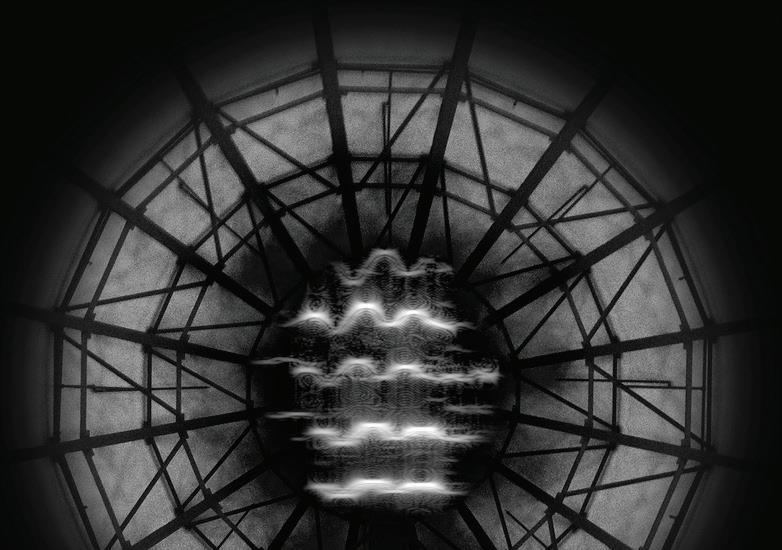
Zai Tang. Resident Frequencies: A Brief Aural History of National Gallery Singapore. 2017. Eight-channel sound installation, 36 min. Commissioned by National Gallery Singapore. Image courtesy of the artist. The architecture of the City Hall and former Supreme Court buildings may be imagined as an ongoing conversation between different generations across time. The inaugural exhibition at the ArchiGallery offers insights into the enduring histories and architectural designs of the two national monuments and their dramatic transformations into a home for Southeast Asian art. It also features never-beforeseen artefacts excavated from the Gallery’s grounds, and a commissioned sonic artwork by artist Zai Tang, which draws on the historical, social and spatial memories created in the buildings.
Organised by the National Archives of Singapore (NAS) and the National Library Board (NLB), this exhibition explores the history of Singapore’s constitutional development from a British settlement in 1819 to its emergence as a sovereign republic in 1965. It presents a selection of 23 rare documents from the NAS and NLB’s collections, each capturing a key moment in Singapore’s legal history and journey to independence.
LAW OF THE LAND: HIGHLIGHTS OF SINGAPORE’S CONSTITUTIONAL DOCUMENTS
Ongoing | Supreme Court Wing, Level 3, Chief Justice’s Chamber & Office
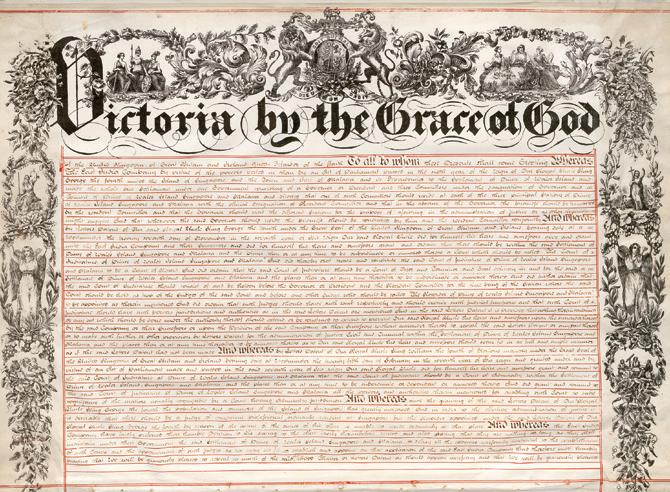
Third Charter of Justice, 1855
This document affirmed the reception of English law in Singapore and provided the settlement with its own professional judge (then known as a Recorder).







